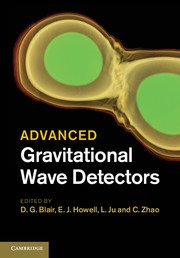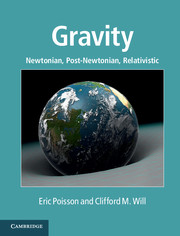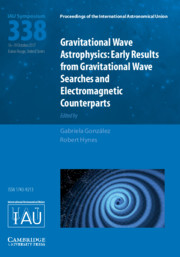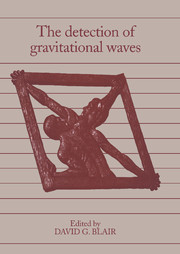Advanced Gravitational Wave Detectors
After decades of research, physicists now know how to detect Einstein's gravitational waves. Advanced gravitational wave detectors, the most sensitive instruments ever created, will be almost certain of detecting the births of black holes throughout the Universe. This book describes the physics of gravitational waves and their detectors. The book begins by introducing the physics of gravitational wave detection and the likely sources of detectable waves. Case studies on the first generation of large scale gravitational wave detectors introduce the technology and set the scene for a review of the experimental issues in creating advanced detectors in which the instrument's sensitivity is limited by Heisenberg's uncertainty principle. The book covers lasers, thermal noise, vibration isolation, interferometer control and stabilisation against opto-acoustic instabilities. This is a valuable reference for graduate students and researchers in physics and astrophysics entering this field.
- An introduction to the theory of Einstein's gravitational waves, the black holes and other sources that will create them, and the instruments designed to detect them
- Features case studies on three gravitational wave interferometric detectors – the most sensitive instruments ever created
- Reviews the experimental issues in creating advanced detectors
Reviews & endorsements
"This book is not only a monograph on advanced gravitational wave detectors and the astrophysical phenomena they will explore, it also contains a pedagogically fine introduction to the field of gravitational wave science. I recommend it to any budding or mature scientist or engineer who wants an overview of this exciting field and where it is going."
Kip. S. Thorne, Feynman Professor of Theoretical Physics, Emeritus, California Institute of Technology
"Almost 100 years after Einstein introduced his Theory of General Relativity, we are finally on the threshold of making direct detections of gravitational waves ... Advanced Gravitational Wave Detectors gives us an up-to-date view of the science and techniques for making the first detections and then developing yet more sensitive future detectors ... This comprehensive review, written by experts in gravitational waves physics, covers these topics in depth and will serve as a very good introduction for students, while at the same time, being a valuable resource for practitioners in the field."
Barry C. Barish, Linde Professor of Physics Emeritus, California Institute of Technology
Product details
May 2012Adobe eBook Reader
9781139227537
0 pages
0kg
112 b/w illus. 14 tables
This ISBN is for an eBook version which is distributed on our behalf by a third party.
Table of Contents
- Part I. An Introduction to Gravitational Wave Astronomy and Detectors:
- 1. Gravitational waves D. G. Blair, L. Ju, C. Zhao and E. J. Howell
- 2. Sources of gravitational waves D. G. Blair and E. J. Howell
- 3. Gravitational wave detectors D. G. Blair, L. Ju, C. Zhao, H. Miao, E. J. Howell, and P. Barriga
- 4. Gravitational wave data analysis B. S. Sathyaprakash and B. F. Schutz
- 5. Network analysis L. Wen and B. F. Schutz
- Part II. Current Laser Interferometer Detectors: Three Case Studies:
- 6. The Laser Interferometer Gravitational-Wave Observatory P. Fritschel
- 7. The VIRGO detector S. Braccini
- 8. GEO 600 H. Lück and H. Grote
- Part III. Technology for Advanced Gravitational Wave Detectors:
- 9. Lasers for high optical power interferometers B. Willke and M. Frede
- 10. Thermal noise, suspensions and test masses L. Ju, G. Harry and B. Lee
- 11. Vibration isolation: Part 1. Seismic isolation for advanced LIGO B. Lantz
- Part 2. Passive isolation J-C. Dumas
- 12. Interferometer sensing and control P. Barriga
- 13. Stabilizing interferometers against high optical power effects C. Zhao, L. Ju, S. Gras and D. G. Blair
- Part IV. Technology for Third Generation Gravitational Wave Detectors:
- 14. Cryogenic interferometers J. Degallaix
- 15. Quantum theory of laser-interferometer GW detectors H. Miao and Y. Chen
- 16. ET. A third generation observatory M. Punturo and H. Lück
- Index.








